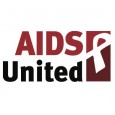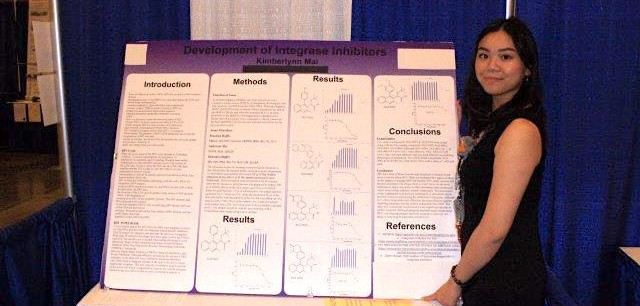Kimberlynn Mai is a high school student from Laurel, MS. This past May, she was a finalist in the International Science and Engineering Fair (ISEF) 2019 — the world’s largest international pre-college science competition — with her project titled “Development of Integrase Inhibitors.” A program of Society for Science & the Public, ISEF focuses on identifying, inspiring, and engaging the world’s next STEM generation. We caught up with Kimberlynn to learn more about her research and what it’s like being a young researcher in the HIV field.
Can you explain what you’re researching? How did you get interested in your research topic?
My research was on preventing a certain phase called integration from occurring. Integration is when HIV inserts its own viral DNA into the CD4’s cell. CD4 cells are found in our immune system and help fight off foreign material in our body. After the integration process, the virus begins to multiply rapidly throughout the body.
I examined the integrase activity of masked acyl cyanide reagents (MAC) to various heterocyclic aldehydes. Masked acyl cyanide reagents (MAC) is an addition to a create a fake route in making a side chain of the proposed compound. MAC helps verify if the side chain had developed and been installed alongside the compound. This step helps examine integrase activity. To put it simply, a separate group of the research program created synthetic compounds, and I tested how effective the compounds were in inhibiting the integration process from occurring.
I got involved in this research after I applied to a program, called Project SEED, that pairs high school scholars with a research group at a university to gain experience working in a lab. The lab that I was fortunate enough to be a part of was researching HIV integrase activity.
What is it like being a young researcher in the field of HIV?
Going into any field as a young researcher can be challenging, and although I did not personally encounter any difficulties that hindered my ability in the lab due to my age and inexperience, I definitely wanted to prove myself to others that I was capable of being in a lab.
Because of this opportunity, I met an amazing mentor named Dr. Masterson who gave me the creative freedom to practice different techniques. In any research lab, there will always be setbacks that make the research more challenging; he never once questioned my ability to complete a routine, and that belief in me helped strengthen my confidence in a research lab at such a young age. Had I not have taken up this job, I would have not been exposed to so many different opportunities from different organizations. This motivates me more to continue to push my boundaries and go beyond what I believe I can only go so far and do.
How do you hope that your research can improve the lives of people living with HIV?
Antiretroviral drugs are used to treat HIV, but the problem that arises is that the virus can easily mutate and become resistant. The drugs become less effective. By continuing to test the effectiveness of the synthetic compounds that we created in our lab, we hope to find a compound that yields a greater result than previous commercial compounds.
We’re in an exciting time, where the end of the epidemic is in our grasp. How does your research fit into the solution?
We believe within 30-40 years a cure for HIV is possible. With our lab, our goal is to make one specific enantiomer of quinoline aldehyde for HIV IN. Enantiomer of quinoline aldehyde for HIV IN is a specific structure that fits into the HIV integrase enzyme pocket the best. This helps us examine the activity of HIV integrase and determine if the integration process has occurred or not. If it does, that means that HIV has successfully been implanted in the host’s cell and will continue to multiply. By doing so, we will be one step closer to reaching a cure for HIV. With the ongoing technology to treat HIV that continues to progress each year and as our knowledge of HIV continues to expand, we are closer to ending the HIV epidemic, and there will be a cure for HIV sooner than predicted.
What’s next for you?
After competing in the International Science and Engineering Fair 2019, I am more motivated now than ever to continue to expand my knowledge on HIV and HIV integrase. I also have a newfound interest in the pharmaceutical industry, given my work toward a potential cure.








Comments
Comments